
ASM Terni
ID: 4420
July 18, 2022
Smart metering enables energy management and flexibility in Smart Grids.
ID: 4436
July 29, 2022
Terminal Link is an international container terminal operator, developer and investor committed to offering high-quality services whilst optimising the financial value and profitability of terminals. The company was established in 2001, and in 2013 it was developed into a joint venture of the French shipping company CMA CGM Group (51%) and the Chinese port operator China Merchants Port Holdings (49%). CMA CGM is the third-largest container shipping company worldwide, specialising in maritime cargo handling, and in covering every shipping need through a comprehensive infrastructure setup of subsidiary units. Terminal Link is the port operating unit of the group, responsible to build, develop and operate an ever-expanding network of terminals in strategic locations throughout the world.
Terminal Link operates a global network of container terminals and serves customers globally with a setup that extends to the Far East, Northern Europe, the Mediterranean, the Middle East, West Africa and North America. With 25 container terminals in its portfolio to date, the company provides high-quality service and local expertise to the major shipping companies as well as CMA CGM lines. In 2020, Terminal Link handled over 24.7 million TEUs[1] in its terminals.

The Malta Freeport Terminals (MFT) is a maritime transhipment hub in the Mediterranean region established in 1988. Located at the crossroads of the world’s greatest maritime routes, the Freeport serves as a versatile centre for major shipping lines, providing the venue of operations for container terminals and warehousing facilities for container handling. Following a privatisation of MFT in 2004, the Freeport now has a strong shareholding structure composed of Terminal Link (50%) and Yildirim Group (50%), a leading global diversified industrial group. The collaborative operations of Terminal Link and MFT aid the Freeport to provide clients with a distinct competitive advantage, combining the flexibility of global connection with the efficiency of local expertise.
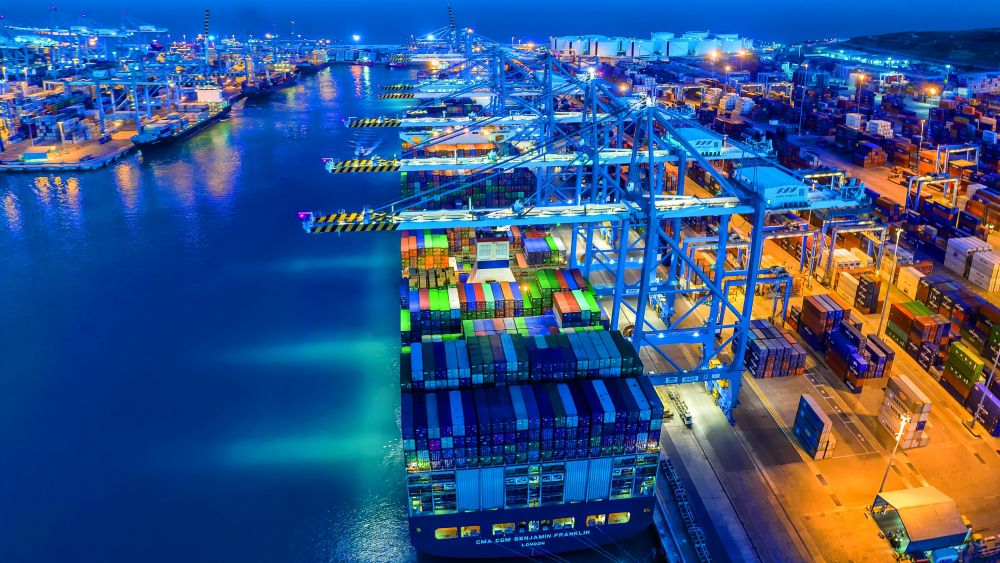
The incentive of Terminal Link to develop their IoT solution derives from the global ambition of transitioning traditional shipping systems into a more sustainable and intelligent format. For Terminal Link, the ambition is fuelled by an aim to optimise the maritime industry by digitalising terminal operations at the ports for increased performance and efficiency.
Digitalisation plays a crucial role for the future operations of container terminals, and a highly demanding business climate is putting pressure on all actors of the maritime ecosystem to take action to increase operational efficiency and reduce emissions. The challenges that lie ahead are significant but careful planning, implementation and governing processes can surmount them and will allow terminals worldwide to unlock their full potential. Actors that are serious about organising their businesses to be robust for the future are undertaking remarkable investments in this direction for the connectivity and automation of terminal assets.
Also, Terminal Link is in continuous pursuit to consolidate its position as a leading container operator and therefore strives to enhance its operations to make the most of the terminal space as well as the port machinery and equipment. With the rise of the IoT era, Terminal Link was quick to recognise the potential of the technology to digitalise the modus operandi of their operations for increased performance without compromising on KPIs. An idea to develop a platform that supports the operations of the terminals in the most efficient and safe manner started to transpire. Such a platform would allow the company to access information on the KPIs of their operations as a baseline for increasing performance. These operational indicators that cover productivity, costs and safety, are equally the KPIs of the client, and to Terminal Link, customer satisfaction is the ultimate aim.
“Machines are managed by a computer PLC[2] and that is not understandable. We cannot understand that – it is not information for us – it is data. With the IoT, we translate the raw data into information.”
Francisco Blanquer, Innovation and Development Senior Manager at Terminal Link
Hence, driven by the revolution of IoT, Terminal Link aimed to be able to access data on operational performance and to build a platform that facilitates gathering and alignment of the data, as well as translation of the data into information that is understandable by other machines, other equipment, other software, and even by humans.

An initial version of a digital platform was developed in 2015. The initiative was part of a European project (by FVP and NOATUM under funding program CEF) that situated a pilot at a terminal in Valencia with the purpose to reduce idle time and fuel consumption of machinery in the terminal. However, as the technological spread in the maritime industry was marginal at the time, the pilot failed to develop a sufficient digital platform to meet the purpose. Years later, a second version was developed based on the same platform concept and algorithms – but with big data specific software. This laid the foundation for Terminal Link’s effort to advance the platform even further while also adapting it to the needs of their customers, and to this end, a third version is now deployed in MFT with a big upgrade in data fusion and edge computing.
“It is about operations, and here, we have room for improvement – that was the origin. Three versions later, now we are in Malta with a big data platform connecting all equipment through IoT.”
Francisco Blanquer, Innovation and Development Senior Manager at Terminal Link
To Terminal Link, MFT is the absolute flagship terminal for operations in terms of volume, capacity and flexibility. Therefore, the Mediterranean Freeport has been an obvious terminal for the further development of the digital platform.
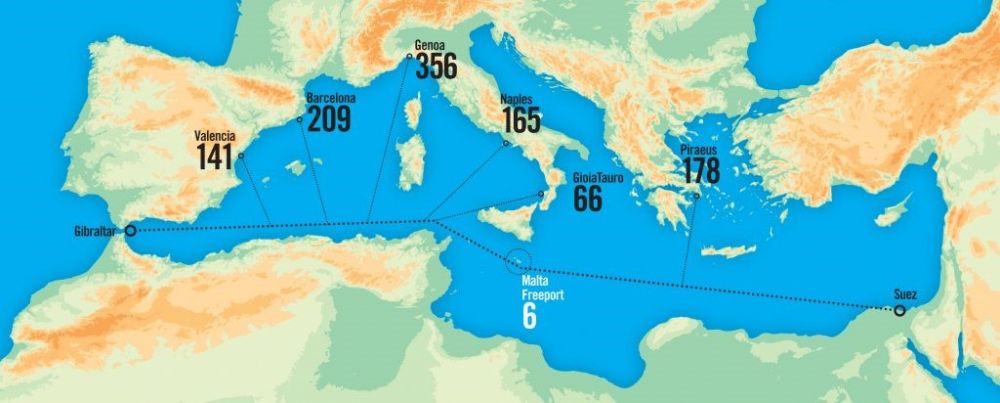
MFT is located at the crossroads of the Mediterranean between Gibraltar and the entrance to the Suez Canal, making it the perfect spot to transfer cargo from one vessel to another. With its 20 quayside cranes and 60 rubber-tyred gantry cranes, MFT has the capacity to accommodate vessels of 23,000 TEU size and a capacity of 3.6M TEUs.. However, MFT is near to reaching maximum capacity in terms of yard occupation. It heavily impacts the business operations by causing saturation of the terminal with almost permanent congestion and occasional collapses. In the event of a collapse, operation productivity dramatically falls, and terminal service can neither be served nor executed. With more than 2,000,000 containers transhipped each year, from 130 origins to 130 destinations, the complexity of the operations is causing daily challenges. Hence, just as much for MFT, a well-developed digital platform could play a fundamental role to consolidate its position within the Mediterranean containerisation market.
However, in the further development process, Terminal Link would learn that translating terminal operations into a digital format is a rather complex task that requires a huge amount of data to be represented properly and accurately in order to be of value to the end-user. Monitoring a terminal requires a great amount of IoT devices that each sends two messages per second, with hundreds (400-600) of data attributes per message, generating around 80 million data points per day and machine. To compute such a huge amount of data in real time, the platform must be very powerful and with multiple computer nodes working together. Even when all the data has been processed, achieving a “human-friendly” representation of the digital information denotes the next challenge.
“It is a revolution: from machine to machine without human intervention. You do not need anybody to input the data, to control the data, to monitor the data. Data is just there! …It is coming directly from the physical machine.”
Fernando Querol, Chief Operational Officer at Malta Freeport Terminal
Terminal Link is in a continuous development process with the digital platform, which has evolved with the support from projects, collaborative partners and even competitors. Implementation of the most recent version of the platform was initiated in early 2020, and full implementation is expected to be finalised in the summer of 2022. At present, no commercially available solutions exist that enable operators to manage terminal operations performance data, and in comparison with rivalling actors in the ambient maritime ecosystem, Terminal Link consider themselves to take a lead role in digitalising the industry based on IoT and big data.
The solution relies on a vast amount of data that is collected at the port. This data collection is done by PLCs, which are embedded in the terminal machines and equipment, and sensors, which are deployed at strategic locations at the terminal facilities. Data signals are collected and transmitted with a frequency of every second to an IoT 2040 Gateway. The gateway is gathering and processing the sensor and PLC signals, translating the raw data into two types of information:
Every time that a crane moves one container, 600 indicators of that move are aggregated, such as time of the move, load of the move, energy consumption of the move, etc. The computerisation system of the gateway thereby tracks all terminal operations. It furthermore serves as a connection point to the cloud, using Wi-Fi to enable fast and real-time transmission of the data. In an Elasticsearch database, Terminal Link’s platform unites, stores and processes the information further.
The platform uses the TIC open protocols to support data integration with third-party services and information systems, enabling the information on terminal operations to flow freely between the many actors linked to the port. TIC is short for the Terminal Industry Committee 4.0, which is an association that works to promote and elaborate the definition of standards for the port industry. These standards facilitate connection between a platform and third-party system(s) via API [3]. This is key for Terminal Link and for the industry to fully embrace the benefits of IoT and to harvest the profitability of the digitalisation.

The huge amounts of data computed by the platform are presented via the user’s preferred interface on three levels:
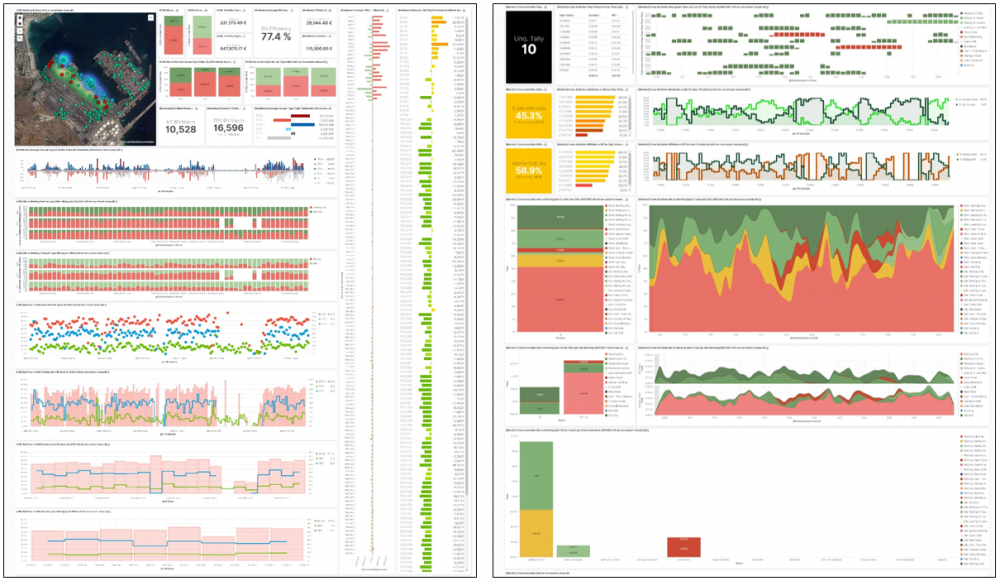
The platform makes almost any single relevant parameter available: Move data, status, spreader, hoist, trolley, engine, timers, power, energy. Business Intelligence software is deployed to represent the raw data in a graphically friendly format across time and/or bucket per any meta-data parameter (for example working, driving, idle, eco-consumption status and any counters such as moves, boxes, cycles, cost). Dashboards regroup all these visualisations on one page for the user to see all the relevant data organised, harmonized and synchronised in real time. Dashboard customisation further facilitates representation of relevant simple KPIs and grouped KPIs, i.e. per concept, machine, driver, vessel etc., as well as tendencies, statistics, heat maps, rankings, and much more that provide visibility of the concept across time and place of operations, machinery and equipment.
“You click and you have everything, but it does not mean that you have all the solutions there. The data itself will do nothing. So it is up to us to take the data and to use it.”
Fernando Querol, Chief Operational Officer at Malta Freeport Terminal
For the time being, the platform leverages Artificial Intelligence (AI) to automate information streams, but not (yet) to automate operations. Hence, solutions are not autonomously provided, and human intervention is still required. The information is nevertheless a sufficient baseline to improve operational performance, offering insights that serve as decision support to the human interventions, enabling the humans to better investigate root causes of problems, and thereby to apply corrective actions to resolve operational problems and evaluate optimal solutions.

The development of Terminal Link’s solution is an obvious contribution to the global ambition of transitioning traditional shipping systems into a more sustainable and intelligent format. By digitalising terminal operations at the ports for increased performance and efficiency, Terminal Link accelerates the notion of connectivity and automation in terminal assets, laying the foundation for more optimal operations of the maritime industry.
The platform is a direct tool to consolidate the position as leading container operator and Mediterranean transhipment hub by supporting Terminal Link to perform secure, reliable, faster, and more efficient terminal operations, and MFT to deliver Just-In-Time container handling that enables them to maintain schedule integrity, reduce operational overheads and sustain customer-focused services.
“The technology has helped make it possible to connect the machines with the humans.”
Francisco Blanquer, Innovation and Development Senior Manager at Terminal Link
The ability of the technology to not only facilitate machine-to-machine communication, but also machine-to-human translation, enables humans to do:
Keeping in mind that more than 95 % of terminal operations are manual, having automated collection, processing and representation of data is invaluable. It provides accurate and real-time information for planning, managing and tracking operations throughout the terminal facilities.
The value of Terminal Link’s platform is manifested as outcome through a continuous profit mechanism that is based on income via the payments made by shipping clients for use of the port facilities and service operations at the terminal. This revenue model will benefit both Terminal Link and MFT in the future, as the platform is running on cloud-based software and therefore requires no further expensive capital investments after the solution is fully implemented. Until then, the parties are conscious that a complete picture is still to come and they avoid taking decisions based on the immediate data results generated by the solution – for now. They are, however, putting preparatory efforts into planning data handling, well aware that knowing what to look for amongst the huge amounts of data may be the biggest challenge. Hence, as soon as the solution is fully implemented, and all the data available, Terminal Link will be able to use it instantly to support decision-making and KPI obtainment.
“Imagine that you have everything! But everything is nothing if you do not use it right. …You have to analyse the data. So the first question is what do I want? What do I need?”
Fernando Querol, Chief Operational Officer at Malta Freeport Terminal
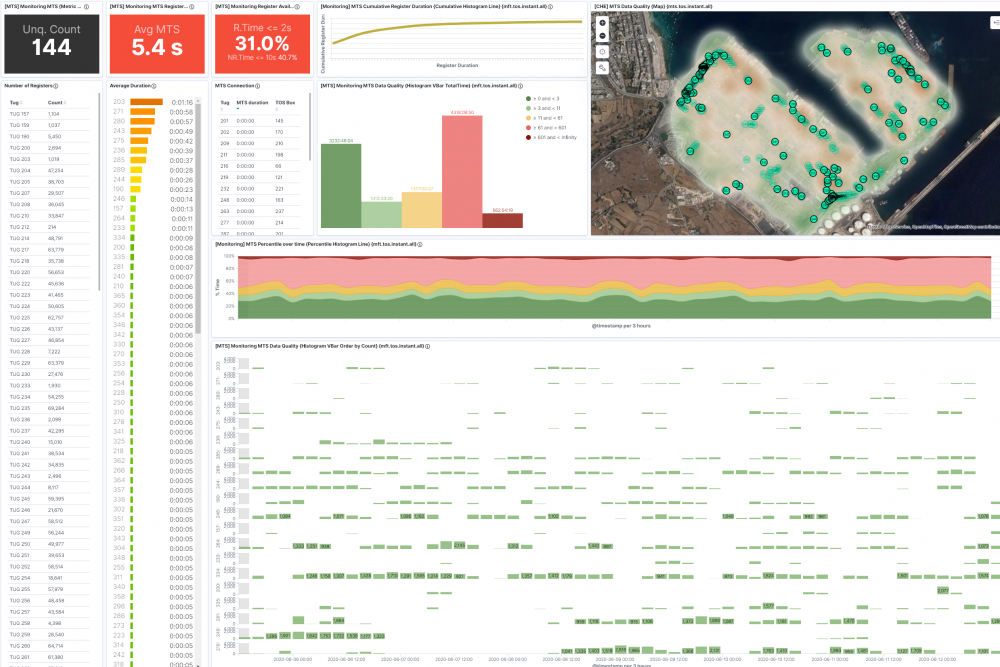
The direct users of the platform are operational managers at the terminal, who benefit from crucial insights on operations delivered in real time and situational awareness delivered through a digital twin – a digital representation of any machine, equipment and process that is part of the container terminal. Besides supporting decision-making to ensure that the container handling operation is carried out as quickly and efficiently as possible, this effectuates two major outcomes:
Indirect users of the platform include the shipping clients, who are also reaping beneficial outcomes from the platform in terms of the capability of Terminal Link and MFT to deliver a state-of-the-art service, reducing the costs and optimising the times of operations. Although the solution at present is deployed in a closed environment, Terminal Link plans to make the platform open to bring together all actors of the maritime shipping ecosystem, providing seamless sharing of real-time, actionable information and collaboration. This will enable MFT to securely integrate data with partners including carriers, ports, terminals, operators and other stakeholders, holding the potential to enhance coordination, planning and forecasting in maritime value chains.
By integrating IoT into the traditionally analogue terminal operations, Terminal Link equips MFT – and in the future also other ports – to allocate resources better, save time and resources, improve their profit performance and ultimately deliver more value to their stakeholders. The solution modernises the entire industry and sets the baseline for the forthcoming evolution.
“We create the baseline of a Big Data mentality for the next step coming, which is the AI.”
Fernando Querol, Chief Operational Officer at Malta Freeport Terminal
However, Terminal Link recons that AI is still premature to the industry and that, for the time being, it is neither possible nor desirable to fully automate terminal operations. If something goes wrong when moving a 40-ton container, people could get killed – and Terminal Link’s commitment to safety in the workplace is second to none. Hence, the company is not yet ready to discard the human intelligence; however, they are indeed ready and fully capable of uniting it with the technological.
Hence, for the operations of Terminal Link and MFT, the digital platform is creating a new digital era that ultimately enables them to increase efficiency and performance in essential deliverables of service, timeline and long-term sustainability, while consistently realising KPIs of productivity and cost and sustaining dedication to customer satisfaction.
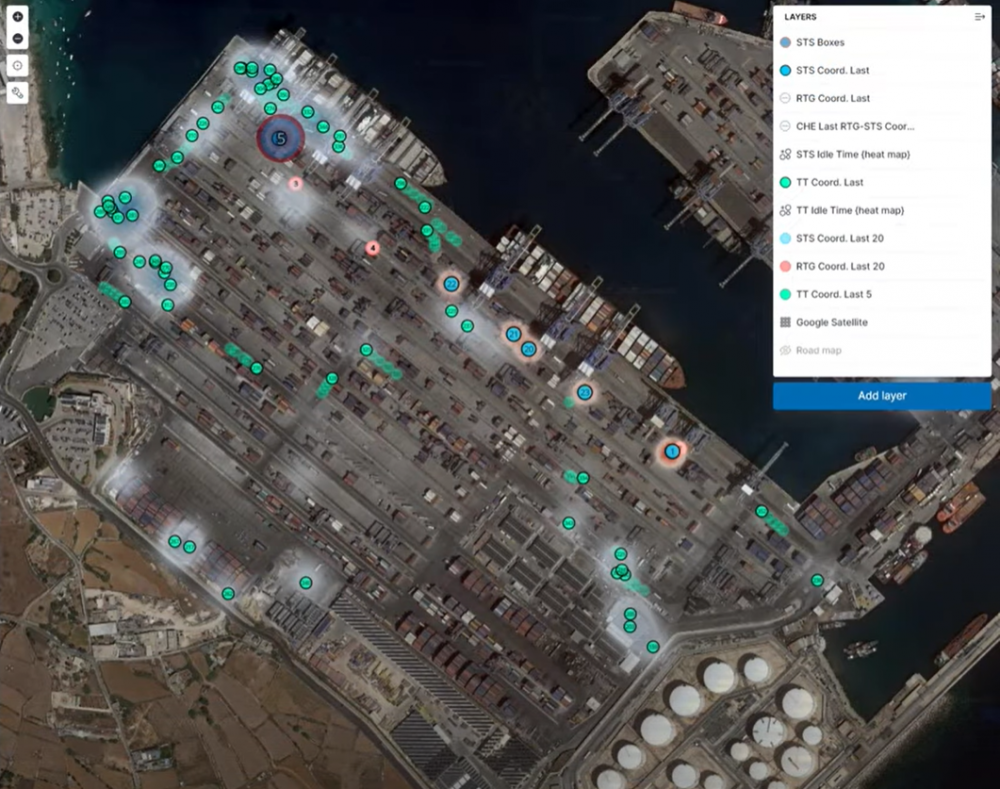
Since Terminal Link introduced their solution and the value to gain from integrating intelligence in terminal operations, the digitalisation readiness of the maritime ecosystem has emerged steadily. Many iterations have passed since the first version of the platform, and Terminal Link have had many learnings along the way. Some of these learnings may have transmissible value to other innovators in the IoT ecosystem.
Offering an IoT solution to a highly conventional industry does imply one key challenge in terms of user acceptance. Perceived ease of use and perceived usefulness are often out of balance because users are requested to change conduct and learn a new digital language.
“The main problem of that the adoption of technology is not the cost or the installation or the servers or the software. The problem is that the people have to be able to learn how to work with data and that takes time.”
Francisco Blanquer, Innovation and Development Senior Manager at Terminal Link
Therefore, a key organisational learning for Terminal Link has been the importance of putting effort into explaining and convincing the desired users about the genuine usefulness and value that the platform is able to generate. Although the initial penetration was difficult, they now see some movement in the industry starting to accept that data insights and data sharing are a source of mutual value creation.
Terminal Link considers a number of points to be vital for the success of their IoT solution. Taking departure in the development of the digital platform and the outcomes already actualised, these points are compiled into a list of recommendations below:
1. Demonstrate value proposition to drive adoption
Many maritime actors are reluctant to share data with others in the port and shipping ecosystem. This reluctance derives from a lack of understanding of the cost-benefit equation of openly sharing data in value chains – a prevalent tendency in many traditional industries – causing many actors to be hesitant to adopt IoT-empowered solutions. The general demand of actors is to see results and/or actualise the value proposition before they make the investment.
“But what is first, the chicken or the egg? How can I give you a benefit if you do not give me the data?”
Francisco Blanquer, Innovation and Development Senior Manager at Terminal Link
From the experience of Terminal Link, this is a matter of convincing the right people. IoT innovators must find the right people, both inside and outside the company, and demonstrate the value of one’s solution to them. When the critical mass is convinced, it is time to present the solution to the rest.
2. Standards for interoperability
Standards are crucial to provide a common language that enables interoperability and data exchange between systems and/or devices. The incorporation of collaborative standards in IoT development is a prerequisite for widespread adoption in any industry, and it is something into which Terminal Link has put much effort, time and priority. To this matter, the company stress that standards should not only facilitate machine-to-machine communication but machine-to-human communication as well.
“We need standards! Very human standards, not just machine standards. …to get adoption of IoT and technology for all the users, we have to find the interface to do it. Very simple and easy.”
Francisco Blanquer, Innovation and Development Senior Manager at Terminal Link
Terminal Link further advises IoT innovators to keep in mind that standards can eventually limit the business growth process if not sustained proactively – today’s standards may not be those of tomorrow.
3. Change the industry mindset in a joint effort
The long history of being an undeterred traditional industry is inherent in the mindset of the maritime actors, which reinforces resistance to digitalisation and implementing technology solutions. This difficulty to innovate is a challenge that exists in many forms and there are pockets of all industries that are late to realise the value potential. To address the challenge, Terminal Link recommends IoT innovators to engage actors of the industrial ecosystem and not limit the engagement to the collaborative partners, but include any actor at any level – even competitors – to change the mindset and obtain mutual value for the industry.
“This is a change in the mindset that is not easy. Don’t try to do it alone. You are not going to change the mindset of a whole industry alone.”
Francisco Blanquer, Innovation and Development Senior Manager at Terminal Link
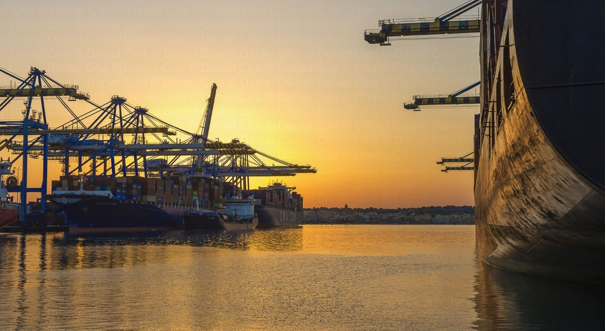
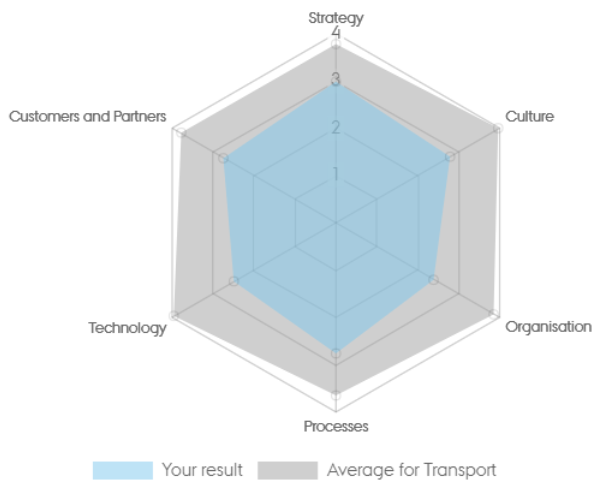
Terminal Link assumes a mediocre level of digital maturity with an overall score of 2.70. The score may be explicated by the assessment of the generic operations of Terminal Link, not reflecting the specific use case at the Malta Freeport Terminal. The score indicates that the digital capabilities of the company are relatively mature, and that they perform below average for the transport sector in general.
The Digital Maturity Assessment Tool is copyrighted by Associate Professor and PhD Annabeth Aagaard, Director at the Interdisciplinary Centre for Digital Business Development, Aarhus University. To get the digital maturity of your company mapped out, click here.
[1] TEU (Twenty-foot Equivalent Unit): Unit of cargo capacity. TEU is an inexact unit of cargo capacity, often used for container ships and container ports.
[2] PLC (Programmable Logic Controller): Electronic device that controls the operation of a machine or process. PLCs are general-purpose controllers that can control and monitor multiple input/output arrangements.
[3] API (Application Programming Interface): interface that enables two pieces of software to communicate. May be used on web-based systems, operating systems, database systems and computer hardware to access data, server software or other applications.
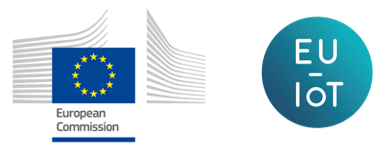
Copyright notice: © 2020 – 2023 EU-IoT Consortium.
This material was produced as part of the EU-IoT project, grant ID 956671, and is funded by the Horizon 2020 Framework Programme under topic ID ICT-56-2020.
EU-IoT is the European IoT Hub. The EU-IoT project works towards growing a sustainable and comprehensive ecosystem for Next Generation Internet of Things.
Source of origin: Information to document this use case originates from the H2020 call: ICT-56-2020 Next Generation Internet of Things (RIA); Project ASSIST-IoT 957258; Period: 01-11-2020 to 31-10-2023; EC contribution 6.3 mil. EUR.
